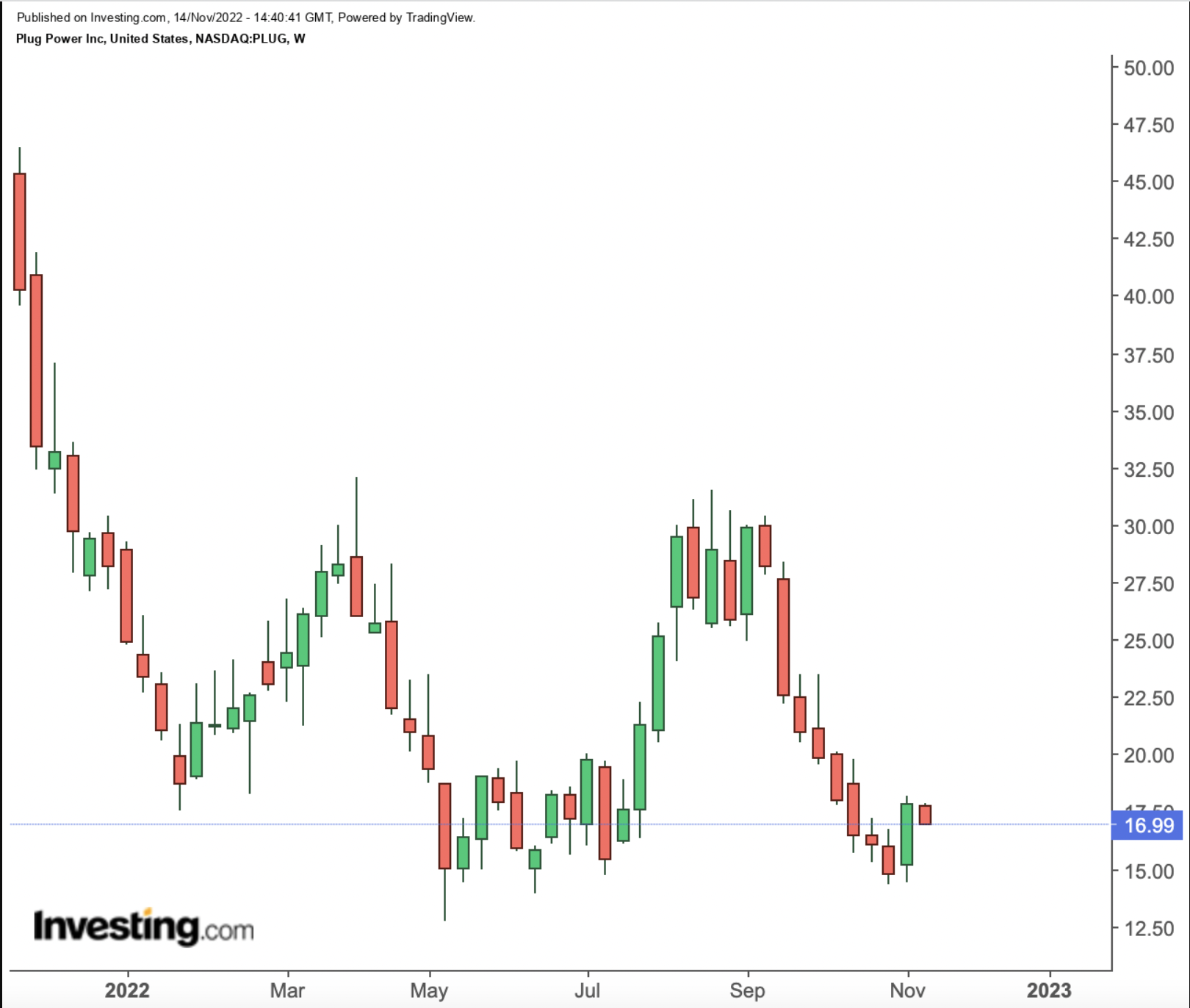- There’s a simple bear case for PLUG, given soft Q3 earnings and a history of disappointment
- Short- and long-term risks abound
- But investors willing to take on those risks have access to a long-term story that, if it finally works out, could provide explosive returns
On its face, there is a clear argument to stay far, far away from Plug Power (NASDAQ:PLUG) stock. From a long-term perspective, this is a company that, to be blunt, has been something of a failure.
Plug Power is hardly a startup. It was founded in 1997. The company has never turned a full-year profit; it hasn’t even come close. Even on an adjusted basis, Wall Street expects the company to lose nearly $600 million this year, roughly 70 cents for every dollar in revenue.
As of the end of the third quarter, Plug Power has an accumulated deficit of $2.9 billion. Those losses have been funded by relentless selling of stock. At the end of 2000, the company had 43 million shares outstanding; as of Nov. 4, the figure was 583 million (not including 25 million stock options and 96 million warrants).
Even from a short-term standpoint, PLUG seems like an easy avoid. The company is coming off a third-quarter earnings report that badly missed analyst expectations. Yet, somehow, the stock rallied on the news, gaining 16.4% last Thursday and another 5%-plus last Friday.
This looks like a stock that ran to $60-plus last year only because of a roaring bull market (in retrospect, some might call it a bubble), and then $30 in August only due to the surprising passage of the Inflation Reduction Act. In that context, the two-session rally last week looks like investors are once again buying Plug Power’s promise instead of focusing on reality.

Source: Investing.com
Admittedly, that simple case may prove to be right. This is a company that has never turned a profit, led by a management team with a long history of overpromising and underdelivering. It’s a company targeting a market with real questions about its sustainability and its actual impact on greenhouse gases. There’s a lot that can go wrong here, and a real possibility that the disappointing Q3 numbers are simply more of the same.
But there’s also a chance that, after 25 years, this time, finally, is different.
Why Investors Bought PLUG After Earnings
It seems exceptionally surprising that investors were patient with PLUG after the big Q3 miss. This is a company that in the middle of the last decade was guiding for near-term adjusted profitability — and came nowhere close to hitting those bogeys. Plug Power has been a “next year” story for years now.
But, looking closer, the patience does make a bit of sense. Plug Power management was insistent that demand remains intact; rather, supply-chain problems and quarterly timing were the culprits. The outlook for Q4 contemplates material handling equipment sales soaring on a quarter-over-quarter basis; executives on the Q3 conference call said those sales could as much as double. Profit margins should improve as well.
Skeptics would retort that those executives are simply making excuses for a weak quarter. They’d likely predict that, come Q4, there will be yet more reasons why results disappointed.
That may be the case. But management at the least is going out on a limb here, particularly with a repeated focus on orders slipping into Q4. There is some logic to investors believing management, even if history suggests they shouldn’t.
Why Plug Power Can Win
It’s true that Plug Power has posted losses for the past quarter-century. But there is a path toward that changing — finally.
Most notably, there’s a logic to the strategy here. The former business, focusing solely on fuel cell-powered equipment, simply wasn’t large enough. The moves into hydrogen production and electrolyzers substantially expanded the company’s addressable market.
Those moves also create businesses that complement each other. Right now, Plug Power is buying hydrogen on the open market, and paying much higher prices amid elevated natural gas prices. Natural gas is used to create so-called “blue hydrogen."
As its production comes online beginning this quarter, however, its costs will plunge and its profit margins will increase. Lower hydrogen prices also improve the attractiveness of hydrogen-powered materials handling equipment, as well as the ProGen system for stationary power generation. More broadly, a company that can transform energy production worldwide — which is Plug Power’s goal — can, over time, generate substantial profits and enormous shareholder value.
Plug shareholders have paid dearly for the buildout of this ecosystem. And Plug Power still has a lot of work left to do — and a lot of risks to navigate.
Most notably, if green hydrogen efforts don’t pan out in lowering prices, the broader strategy here stalls out. All that’s left is a sharply unprofitable company with a $10-billion market cap.
Investors even considering PLUG have to be willing to take on risk — and a lot of risk. But few stocks in the market offer these kinds of rewards, either. It’s not terribly surprising that even in a bear market, investors remain willing to focus on those rewards.
Disclaimer: As of this writing, Vince Martin has no positions in any securities mentioned.
